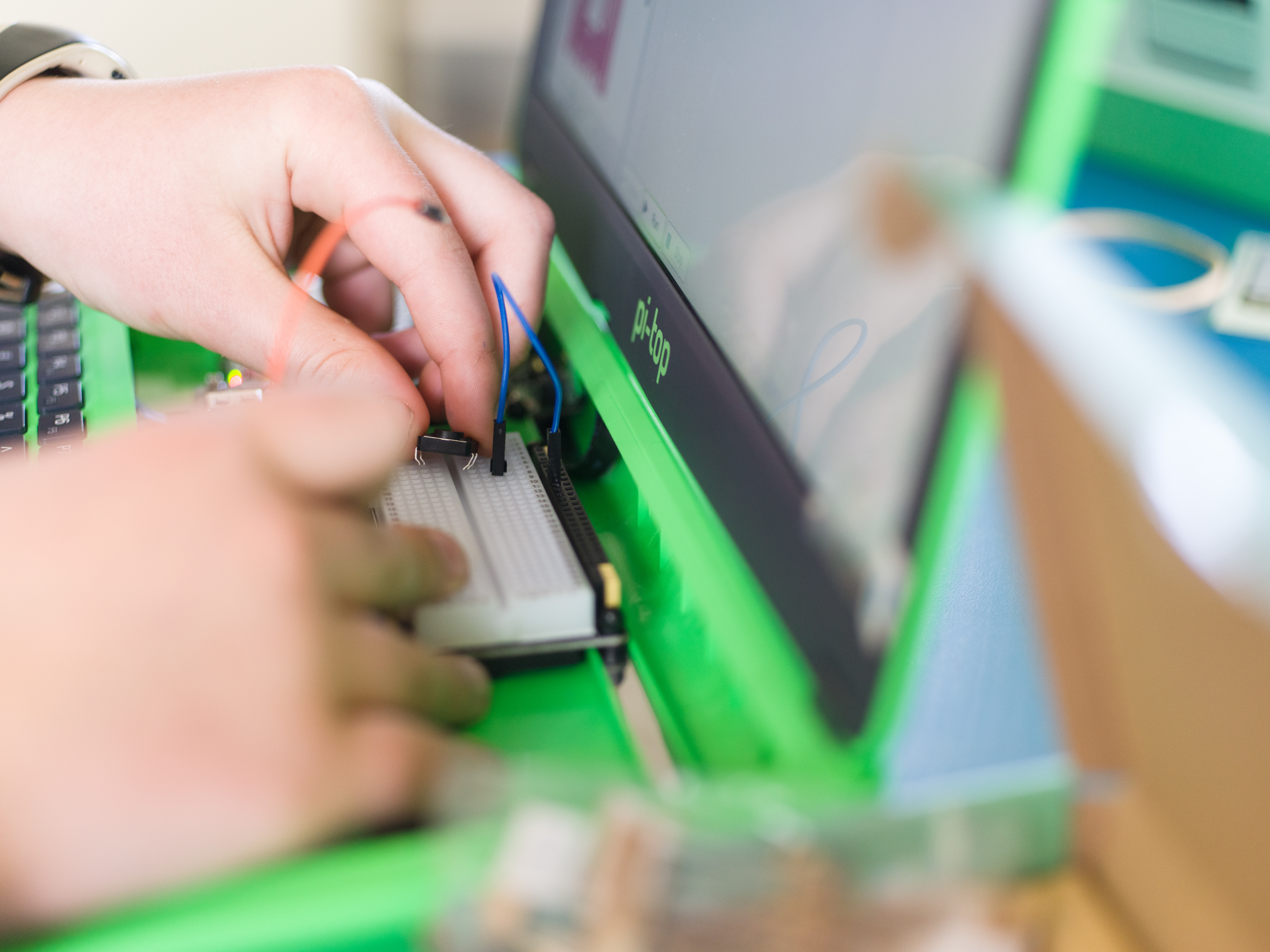Sam Page is the Head of Computer Science at Westminster School (London, UK)
Hi Sam, tell us about your position at Westminster School
I am the Head of Computer Science at Westminster School. We are inspired by the
Maker Movement and encourage our pupils to try practical computing both inside and outside the curriculum. All our pupils in Year 9 follow a compulsory Python course, and we follow an iGCSE specification in years 10 and 11. We try to make sure that there are opportunities outside the classroom to try robotics, cryptography and offer support for a range of computing competitions.
What have you learnt or taught with pi-top?
We have been keen enthusiasts of the Raspberry Pi since it was first launched but found that time constraints meant we were not able to use them as often as we would like within the classroom. pi-top has allowed us greater freedom to explore practical computing with larger groups simply by being quicker and more convenient to set up. It has also introduced the pupils to implementing their programming skills in a different way, using the SenseHat and other physical components.
How have you used pi-top in the classroom?
In Year 9 we regularly use the pi-topCEED with the SenseHat. In Years 10 and 11 they are a useful tool to demonstrate practical implementations of theory topics. We often use them for students who are completing differentiation tasks.
We have used the pi-topPROTO boards with our Sixth Form students during their EPQ lessons to prototype stepper motor controllers, for example – the removable acrylic panel easily facilitates this.
They are used as easily portable stand-alone demonstrators, sometimes simply running
YouTube videos on a loop. This year we used one in the staffroom to randomly choose our Secret Santas!
Have you found any benefits in your practice using pi-top?
The pi-tops have given us the opportunity to implement practical computing lessons without worrying about the time constraints of rearranging the computer lab. They are easy to set up and put away, and this lets us focus on the learning rather than plugging and unplugging monitors. This is important where most CS departments do not have technician support on hand to help.
What has been your favourite project you’ve seen produced on a pi-top?
This year we have issued all our GCSE students with a Raspberry Pi and asked them
to build physical computing projects on a particular theme. Having the pi-tops means that pupils can bring in their SD cards or their own computers and set them up and work on them both at home and within the classroom. Amongst our favourites are a project that tweets pet hygiene alerts by weighing their litter tray with a load cell; a ‘magic mirror’ which lets the user know the arrival time of the next bus to school, and an infra-red Hamster Cam for the pet who is never awake when you are.
What advice would you have for anyone using or teaching with pi-top?
There are lots of good resources and forums to support those who want to try practical projects. Set a few examples up yourself, and then leave them out in the classroom and pupils will be curious about them. Use the resources from pi-top and the Raspberry Pi Foundation and let your pupils experiment and have fun!
This interview was first published in 'Learning by Making' magazine Issue 1.
If you’d like to find out more about how 'learning by making’ with pi-top can help you, your students and your school, get in touch here.
